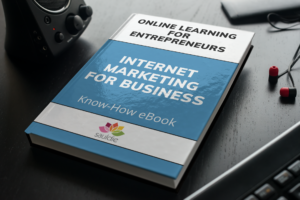Advertisers and publishers can use Google Adsense to place adverts that contain both text and graphics. The question is whether advertisers prefer Adsense to banner advertising on their websites. Which is most beneficial for advertisers and which is most beneficial for publishers?
On the one hand, advertisers may believe that image ads are more receptive, but that they are less likely to result in a sale. Text ads, on the other hand, may convert better even though they are less obvious to the consumer.
The least invasive of the two formats is text-based advertising. But does this mean that graphic advertising is better? People who sign up for free email accounts and use other web-based services are exposed to graphic advertising. They have almost become accustomed to ignoring visual advertising because they are constantly exposed to it. Consumers are used to brand advertising, which they find less meaningful because the advertising is not targeted.
As the consumer expects graphic adverts to be the same, they may not pay attention to them. Surfers are not forced to see text adverts. Some will overlook them because they are less noticeable. But those who do see and read them are much more likely to click on them. This is due to a number of factors, the first of which is that they provide more information.
Generally, when someone reads a text on a page, they are not entirely satisfied with what they read. If they look at the AdSense adverts, they will most likely read something that complements their next goal. With an image ad, the surfer is taking a much bigger risk. Graphic adverts are often sold on a per impression basis. This is because the advertiser is trying to market their brand rather than a specific service. Therefore, they are considered less likely to convert, making text ads more successful in the eyes of the consumer.
What would be most effective if the text in an advert was displayed in a graphical format? First of all, you can assume that the surfer will be more inclined to see it. However, if many image ads are displayed next to each other, the surfer may be annoyed. Graphical adverts are also more difficult to regulate. Think of Google's policy that allows adverts to be updated regularly and without supervision.
The marketer could claim a relationship with the site they are advertising on and use keywords such as "ipod" that are not found in a text advert. Despite the fact that there is more regulation and quality control, a pornographic image, for example, could inadvertently appear in an advertiser's adverts.
Text ads appeal to a broader market as advertisers do not always have the resources to design an image ad, but do have the means to write a text ad. This could mean that a greater number of advertisers will have access to text ads as they are less time consuming and easy to change.
Text ads are also cheaper for the advertiser to create than visual ads, which can cost upwards of 200 $. Advertisers may be willing to spend a higher proportion on the adverts themselves if these fixed costs are eliminated, benefiting both the advertiser and the publisher.
Advertisers seem to favour text ads. They pay a CTR (click-through rate) and receive only customised traffic in return. Companies no longer have to worry about their adverts not only being seen but also being clicked on, which leads to an increase in sales.
Advertisers can attract attention even without a high click-through rate, as the CPC (cost per click) is more relevant for text ads. The big brands are willing to advertise in both mediums, but text is undoubtedly the winner due to its wide market acceptance. As image adverts disappear from Flash websites, it is becoming increasingly clear that website consumers prefer text and information.

